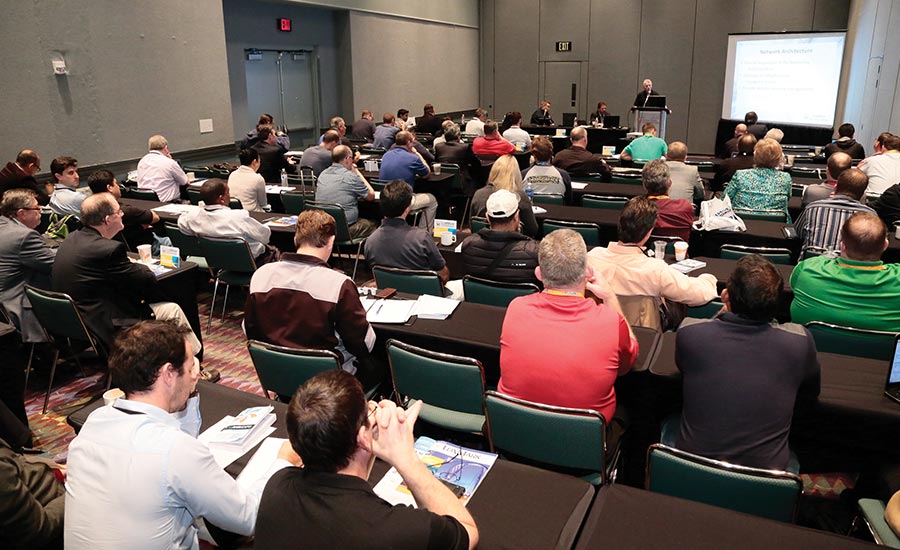ATLANTA – An in-depth look at ASHRAE’s work in the residential market as well as guidance on several aspects of residential design will be offered in four free seminars at the 2017 AHR Expo.
The 2017 ASHRAE Winter Conference takes place Jan. 28 to Feb. 1 at Caesars Palace in conjunction with with the co-sponsored AHR Expo at the Las Vegas Convention Center.
The four seminars, scheduled for 11 a.m. to 5 p.m. Tuesday, Jan. 31, are free, and no badge is required to attend.
Leon Shapiro, conference chair, said the sessions are being held at the AHR Expo given the large number of exhibitors with a residential focus as well as the many residential contractors who will be attendees. Statistics from the 2016 AHR Expo show that 43 percent of visitors indicated they work in the residential sector.
“The sessions highlight the growing importance within ASHRAE of residential energy use and the steps ASHRAE has taken to partner with both the public and private sectors to improve residential design and energy standards,” he said. “They also serve to increase public awareness in residential energy efficiency.”
He notes that design and installation have a tremendous impact on residential HVAC capacity and efficiency, so one of the seminars highlights the consequences when residential design and installation standards are not adhered to. Another session provides best practices for distributing heat in residential HVAC air and hydronic systems while another offers real world experience on how actual energy use and thermal comfort can differ from the homeowner’s expectations.
The seminars are:
Did It Really Work? Theory vs. Practice in Residential HVAC — The late, great Yogi Berra once said: “In theory, there’s no difference between theory and practice. But in practice ... there is.” The speakers at this seminar agree with Berra. Using measured data from both dry and humid climates, they show how actual energy and thermal comfort in real-world houses differs from expectations. But beyond the problems, the speakers also show data from specific designs and installation practices that have helped contractors meet and exceed customer expectations with simple, low-cost, reliable equipment instead of whiz-bang, expensive stuff that too often fails to deliver comfort and low energy performance.
ASHRAE's Residential Initiative: Why We Care — Although ASHRAE historically has not focused on residential HVAC energy use, the residential sector consumes at least as much energy as the commercial sector and approximately one-fifth of all primary energy in the U.S. Three presidential fellows will present on ASHRAE’s recent endeavors into the residential sector. The session covers how the Residential Ad Hoc Committee became the newly established Residential Building Committee (RBC), what purpose the RBC serves, the importance of residential design in ASHRAE standards, and a summary of ASHRAE’s residential market advocacy efforts with government agencies.
International Experience and Contractors Perspectives on Residential Aspects that Need to be Considered on Every Job — It has long been recognized that design and installation faults have an impact on HVAC system capacity and efficiency. However, the magnitude and consequences of these fault impacts were unknown. This seminar provides insights from a recently concluded four-year investigation that quantifies the consequences of failing to observe the design and installation elements contained within the industry’s HVAC Quality Installation specifications. It also highlights steps taken in Europe that are relevant to the North American market to reduce residential energy consumption, including deep retrofit strategies and incremental options with large market uptake for overall large impact.
Flex Ducts, Hard Ducts, and No Ducts Migration Patterns for Duct Hunters (or not) in the Land of Thermal Comfort — In the land of comfort, educated homeowners are changing their thermal expectations from HVAC systems, and contractors are on the front line hunting for the best solutions. Regardless of ducts or pipes, the “migration” of heat takes a basic understanding of what works and what doesn’t. It is not easy to figure out the right design for the application, especially as homes get more efficient. Low-cost ducted systems may not always work right or be the best fit. This seminar looks at best practices for distributing heat in residential air and hydronic systems, including ducted and radiant design options.
Publication date: 1/30/2017
Want more HVAC industry news and information? Join The NEWS on Facebook, Twitter, and LinkedIn today!









